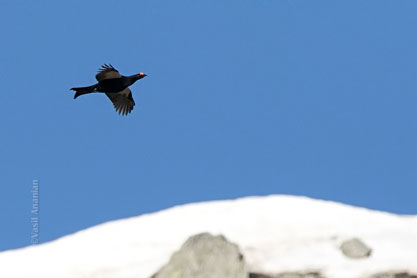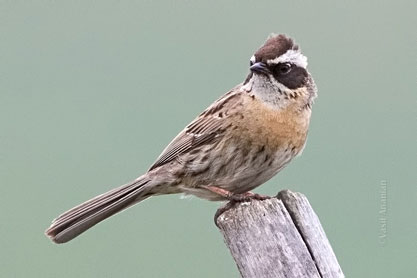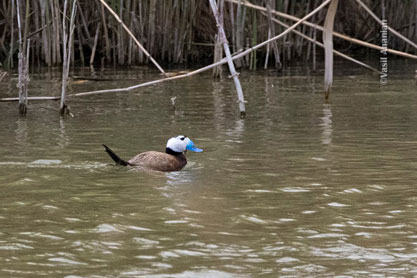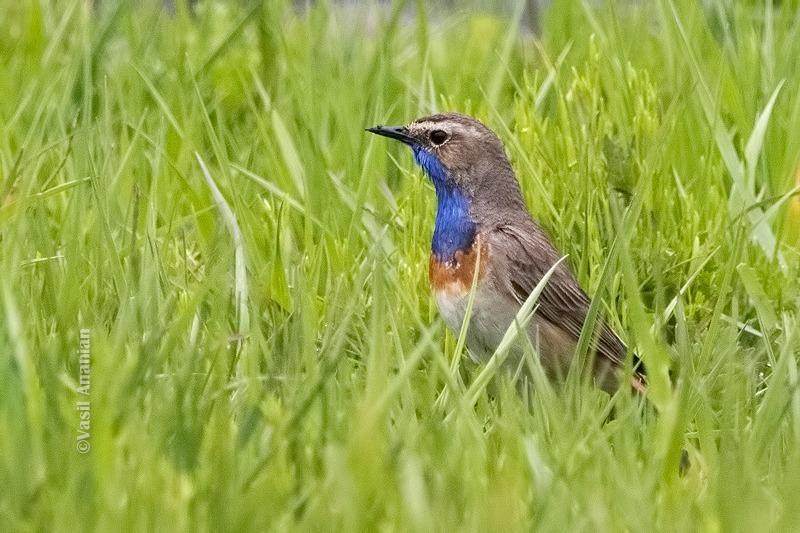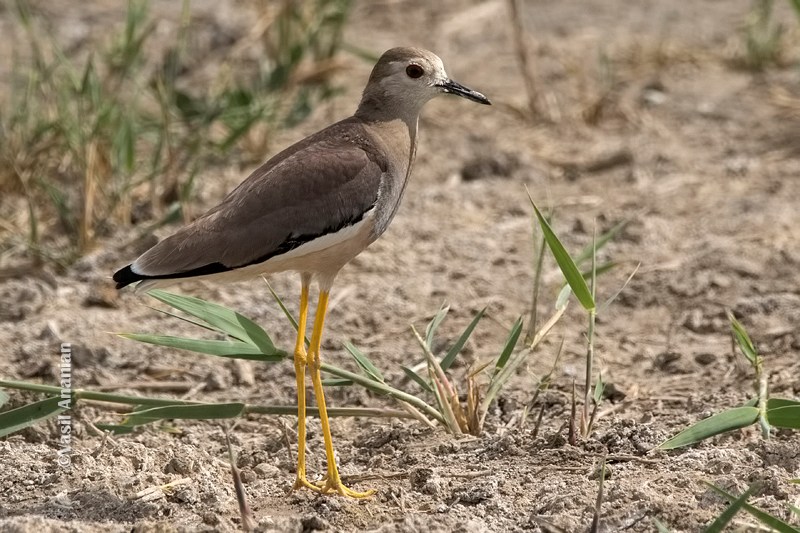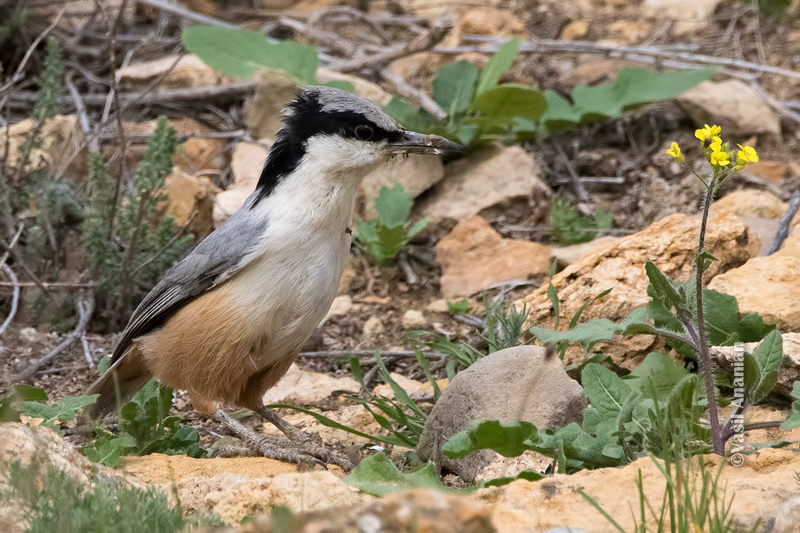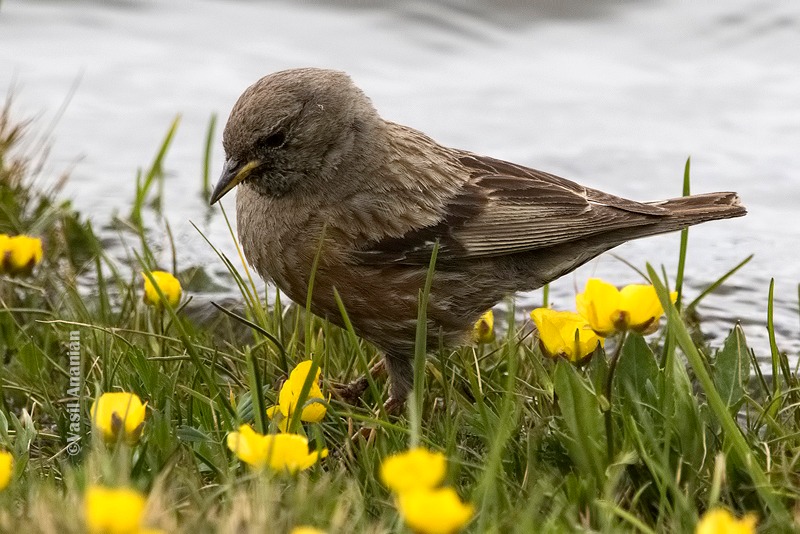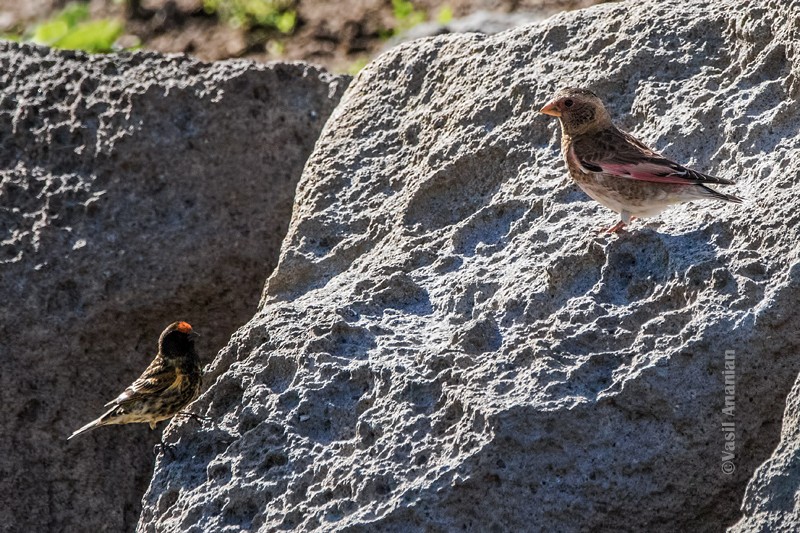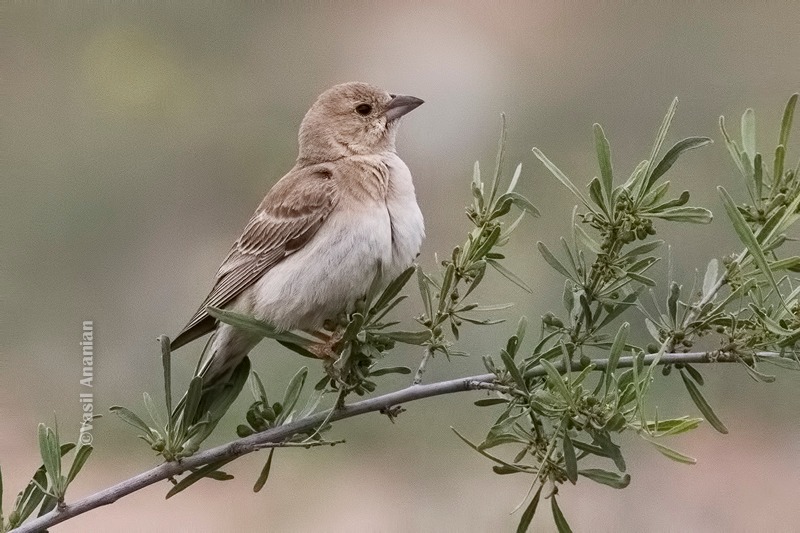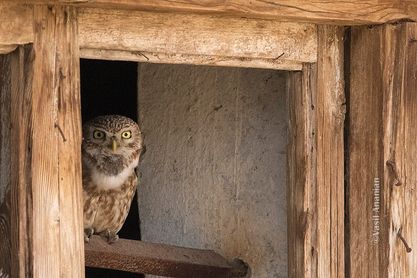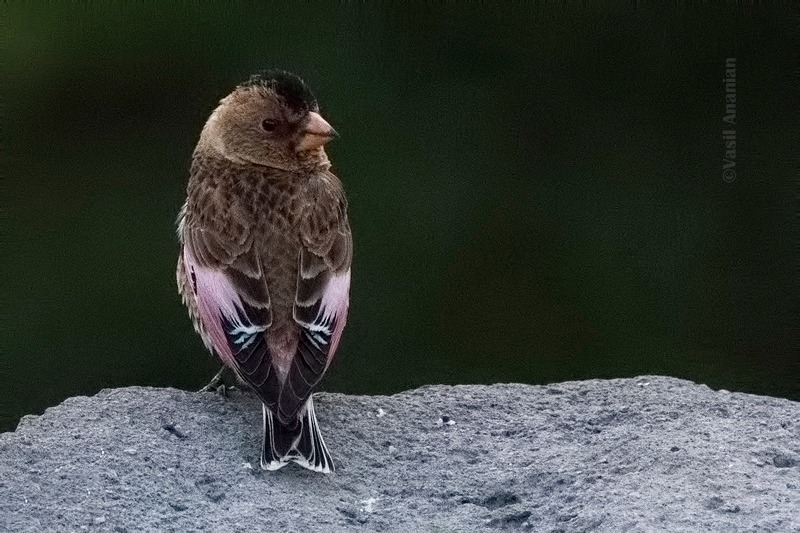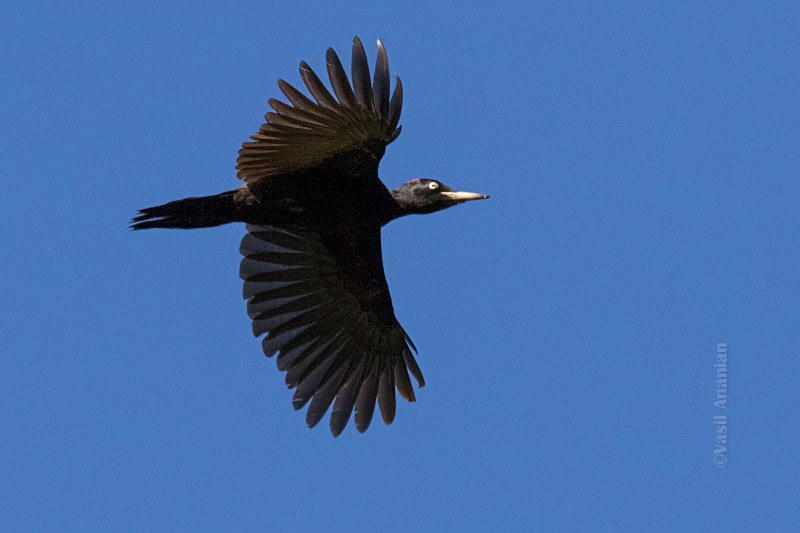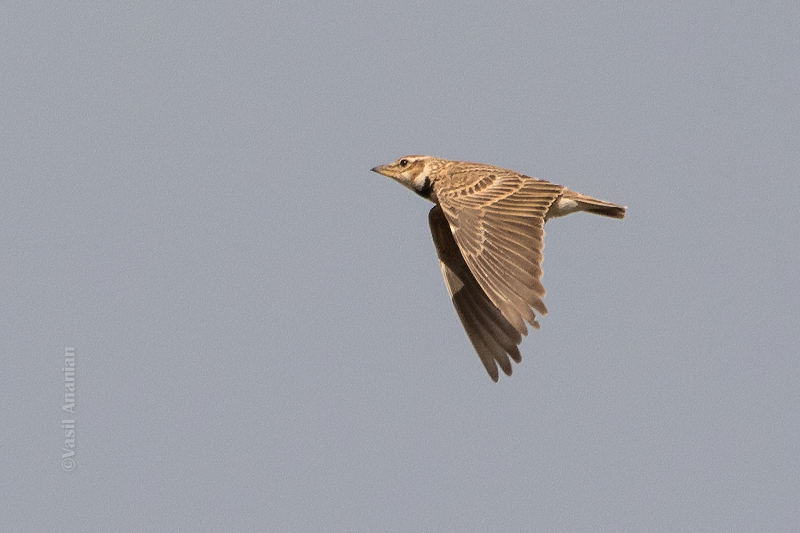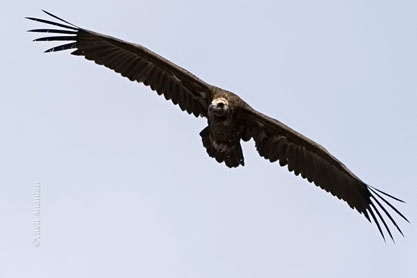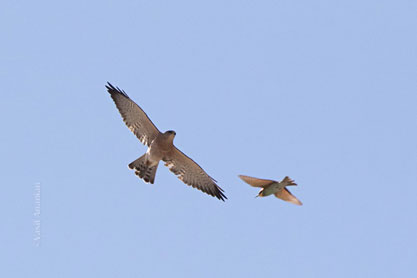

DURATION: 8 field days, 9 nights.
TOUR COST: AMD 695,000 per person (see details below).
Day 1. Arrival
Meeting at Zvartnots airport and transfer to hotel.
Overnight: a hotel in Yerevan (one night).
Day 2. Dilijan National Park
Today we move to the Dilijan National Park in the forested part of north-eastern Armenia. The whole day we will spend in the mature deciduous mountain forest of the National Park, as well as in orchards and riparian forest in the Aghstev River valley. The forest here is mainly composed of oak, beech, hornbeam, linden and various other trees and shrubs forming dense understory. Willow is common along the watercources. Our primary targets in the area include Middle Spotted Woodpecker, the samamisicus Redstart, Green Warbler, Red-breasted and Semi-collared Flycatchers. Other birds of the National Park include Goshawk, Common and Honey Buzzards, Booted Eagle, Stock Dove, Tawny Owl, Green, Black, Greater Spotted and Lesser Spotted Woodpeckers, Dunnock, Robin, Blackcap, Spotted Flycatcher, various tits, Eurasian Nuthatch, Treecreeper, Bullfinch and Hawfinch.
In Dilijan forest we also have a chance for a Caucasian Squirrel.
Overnight: in a suitable hotel in forest setting (one night).
Day 3. Pambak Mts: foothills to subalpine meadows
This morning we have a very early start to Pambak Mountain Range on 4x4 vehicles. Our primary target for the day is Caucasian Grouse, which inhabits talus fields and Rhododendron bushes at the upper timberline of Pambak. Neighbors of the grouse include Grey Partridge, Water Pipit, Black Redstart, Rufous-tailed Rock Thrush, Ring Ouzel, Twite and Red-fronted Serin. Possible raptors here are Bearded and Griffon Vultures, Golden and Lesser Spotted Eagles, Common Buzzard and Goshawk. After the descend from the ridge, at the foothills, in the outskirts of villages in hayfields and wet meadows we will look for Quail, Barn Swallow, House Martin, Tree Pipit, Black-headed Wagtail, Whinchat, European Stonechat, Common Whitethroat, Sedge, Grasshopper and Cetti’s Warblers, Red-backed Shrike and Common Rosefinch. Broadleaved forest and pine plantations on the northern slopes of Pambak Mountains are home to Great Spotted Woodpecker, Dunnock, Robin, Common Redstart, Mistle Thrush, Caucasian Chiffchaff, Semi-collared Flycatcher, Treecreeper and Bullfinch. In the end of the day we will transfer to Lake Sevan area.
Overnight: a hotel at Lake Sevan (one night).
Day 4. Lake Sevan and Vardenyats Pass
In the morning we will visit the shores of one of the world’s largest freshwater alpine lakes – Lake Sevan. One of our targets at the lake is the second largest in the world breeding colony of the near threatened Armenian Gull. The gull, however, is very common locally, is omnipresent in the basin of the lake, although it is always notoriously shy towards human.
Back in the soviet era the shoreline of the lake has been extensively planted with poplar, pine and especially sea buckthorn. The planted areas here are adjoining shallow wetlands, small lagoons fringed with reedbeds, which we will explore in search of species like Great Crested and Black-necked Grebes, Great Cormorant, Night Heron and Cattle Egret, Grey Heron, Glossy Ibis, Ruddy Shelduck, Gadwall, Shoveler, Garganey, Ferrugibous and Tufted Ducks. Abundance of prey attracts Marsh Harrier, Goshawk and Peregrine. Waders at the Lake Sevan include Black-winged Stilt, Little Ringed Plover, Northern Lapwing, migrating parties of stints and sandpipers, Common Snipe, Ruff. Other birds to mention at the lake are Common, White-winged, Whiskered Terns and occasional Black Tern, Hoopoe, Roller. Tree plantations attract Woodlark, Tree Pipit, Mistle Thrush and Penduline Tit. Sea-buckthorn thickets are home to Cetti’s and Marsh Warblers and Caucasian Chiffchaff, Red-backed, Lesser Grey and Woodchat Shrikes. Reedbeds hosts Water Rail, Sedge and Moustached Warblers, as well as the thick-billed caspia race of Reed Bunting.
In the second half of the day we head south to the Vayots Dzor province via the Vardenyats Pass.
As the road gently ascends towards the pass through mountain steppes along the Argichi River, we will make few stops to explore highland waterlogged meadows at the foothills of the Armaghan volcano for possible waterbirds and will search the roadside slopes and rock outcrops for species like Rufous-tailed Rock Thrush, Bluethroat, Whinchat, Radde’s Accentor, Twite and Snowfinch. The Vardenyats Pass (2,410m a.s.l.) regularly provides various raptors like vultures, eagles, buzzards. The ancient caravanserai (built in 1332) is situated just below the highest point of the pass and its environs are inhabited with various passerines such as Black Redstart, Rock Sparrow, Eastern Stonechat and the frequently seen here Crimson-winged Finch. As we descend down to the Arpa River Valley, the landscape changes into a Mediterranean type with abundance of rocks, open juniper woodland and phrygana dominating vegetation. Here we have chances for species like Chukar, Ring Ouzel, Blue Rock Thrush, Eastern Black-eared Wheatear, Eastern and Western Rock Nuthatches and Red-fronted Serin, while orchards around villages are home to Levant Sparrowhawk, Golden Oriole, Eastern Olivaceous Warbler and Common Nightingale.
Overnight: a suitable hotel or B&B in the Arpa Valley (four nights).
Day 5. Slopes of Karkatar Mts and Noravank Gorge
Our day starts with early morning ascend on 4x4s up to Karkatar Mts. The first half of the day will spend high in the mountains among rock outcrops, meadows with talos and deep gullies overgrown with bushes and trees. Our primary target here is Caspian Snowcock. Other birds regularly observed in the area include Grey Partridge, Golden, Lesser Spotted and Short-toed Eagles, Griffon, Bearded and Egyptian Vultures, Long-legged Buzzard, Woodlark, Water Pipit, Tree Pipit, Crag Martin, Black Redstart, Rufous-tailed Rock Thrush, Ring Ouzel, Western Rock Nuthatch, Red-billed Chough, Red-fronted Serin and Crimson-winged Finch. The area regularly provides superb views of Brown Bear and Bezoar Goat.
In the second half of day we will visit the scenic canyon of Noravank Monastery (XIII century CE). The rocky slopes of the canyon with shrubs hold Chukar, Eastern Black-eared and occasionally Red-tailed Wheatear, White-throated Robin, Eastern Stonechat, Eastern Orphean Warbler, Upcher’s Warbler, Eastern Rock Nuthatch, Rock Bunting. The area is frequented by various raptors breeding nearby – Kestrel, Peregrine, Egyptian Vulture and Long-legged Buzzard. Old orchards and cultivated areas lower down provide an additional chance for garden and farmland species – Common Cuckoo, Syrian Woodpecker, Wren, Cetti’s Warbler, Lesser Grey and Red-backed Shrikes, Golden Oriole and Black-headed Bunting.
Overnight: as the night before.
Day 6. Arpa River Valley and Syunik Plateau
Today we will look for birds on Syunik Plateau and in Arpa River valley.
In the Arpa River valley, forested rocky gorges host Common and Long-legged Buzzard, Golden and Short-toed Eagles, Common Kestrel, Chukar, Turtle Dove, Alpine Swift, Roller, Crag Martin, Blue Rock Thrush, Eastern Black-eared Wheatear, Lesser Whitethroat and Rock Bunting. Gallery forest along the river is home to Hobby, Syrian Woodpecker, Long-tailed and Penduline Tits, Spotted Flycatcher and Eastern Olivaceous Warbler. Dipper and Grey Wagtail are found on the river. As we reach Syunik Plateau we find ourselves amongst mountain steppes and meadows, which offer good opportunities for observing various raptors, including Bearded, Cinereous and Egyptian Vultures, Lesser Spotted, Golden and Booted Eagles, Lesser Kestrel. Passerines here are represented with Skylark, Northern Wheatear, Linnet, Twite, Crimson-winged Finch and Ortolan Bunting. Mountain slopes with scattered rocks and scarce bushes of Dog Rose hold Barred Warbler, Bluethroat, Whinchat, Red-backed Shrike and Western Rock Nuthatch. Waterlogged patches near the human habitations attract Black-headed and occasionally Citrine Wagtail, Sedge Warbler. While on the plateau we will stop near the Spandarian Reservoir, which may hold gulls, various terns and occasional Black Stork.
Overnight: as the night before.
Day 7. Urts Mts (if required) and Fishfarms of the Ararat Plain
This morning we have an optional visit to an arid gorge in Urts Mountains in search of Red-tailed Wheatear (but only if we miss the species the previous day in Noravank canyon). The wheatear’s neighbors here include Grey-necked Bunting, Chukar, Upcher’s and Eastern Orphean Warblers.
The rest of the day we will spend in a large fishfarm in the Ararat Plain. The fishfarms here were established back in the soviet era and are represented with medium to large ponds densely fringed with emergent vegetation and interconnected with a complicated network of ditches. Because of insufficient management many ponds were overgrown with extensive reedbeds. The areas adjacent to the ponds are represented with shallow marshes and the remaining patches of saline semidesert with characteristic plants like Saltwort, Tamarisk etc. Establishment of the fishfarms with time has offered favorable conditions for an outstanding variety of birds. Some of the common breeders of the area include Great Crested and Little Grebes, Pygmy Cormorant, Little Bittern, Night, Squacco and Purple Herons, Cattle and Little Egrets, Red-crested Pochard, Ferruginous Duck, Marsh Harrier, Water Rail, Black-winged Stilt, Redshank, Lesser Short-toed Lark, Black-headed Wagtail, Savi’s, Sedge, Eurasian Reed, Great Reed and Menetries’s Warblers and Bearded Tit. Less numerous or uncommon breeders here are Spoonbill, Greylag Goose, White-headed Duck, Marbled Teal, Pied Avocet, Collared Pratincole, Kentish Plover, White-tailed Lapwing, Little and Whiskered Terns, Blue-cheeked Bee-eater, Moustached and Paddyfield Warblers and Reed Bunting. Spring and autumn migration offers here species like Dalmatian and White Pelicans, Sanderling, Little Stint, Curlew and Broad-billed Sandpiper, Dunlin, Black-tailed Godwit, Marsh and Terek Sandpipers, Slender-billed Gull, Gull-billed Tern, large flocks of White-winged Tern.
Overnight: as the night before.
Day 8. Vedi Hills and surrounding areas
Today we will explore the arid landscape of Vedi Hills. The area is characterized with gentle treeless hills with rock exposures here and there and loose rocky ground sparsely covered with shrubs of Tamarisk, wild almond, Pallas’s buckthorn and semidesert vegetation. The hills are often patrolled by various raptors, such as the Cinereous, Griffon and Egyptian Vultures, Long-legged Buzzard and Short-toed Eagle. Flatter areas are home to Isabelline and Finsch’s Wheatears, Greater Short-toed and Crested Larks and Tawny Pipit. Dry gullies with sparse shrubs and scarce water sources attract a range of semidesert specialists like Rufous Bush and White-throated Robins, Eastern Black-eared Wheatear, Upcher’s and Eastern OrpheanWarblers, Eastern Rock Nuthatch, Rock Sparrow, Pale Rockfinch, Trumpeter Finch, Rock, Black-headed and Grey-necked Buntings and occasional Desert Finch. Orchards in nearby villages attract Lesser Grey and Red-backed Shrikes and large mobile flocks of Rosy Starlings.
Overnight: a hotel in Yerevan (two nights).
Day 9. Aragats Mt: foothills to alpine zone
Our last day is spend on the volcanic slopes of the Mount Aragats. Here we explore foothills of the mount for the birds of the orchards and open habitats, such as Bee-eater, Roller, Hoopoe, Syrian Woopecker, Tawny Pipit, Bimaculated, Crested and Greater Short-toed Larks, Isabelline and Finsch’s Wheatears. As we ascend, we will pass by orchards and lightly forested areas with bushes holding Woodlark, Golden Oriole, Semi-collared Flycatcher, Common Nightingale, Chetti’s Warbler, Lesser Whitethroat and Caucasian Chiffchaff. Higher up among the mountain meadows and rock fields with scattered dwarf juniper and Dog Rose bushes we will look for Skylark, Horned Lark, Water Pipit, Radde’s and Alpine Accentors, Bluethroat, White-throated Robin, Black Redstart, Rufous-tailed Rock Thrush and Ring Ouzel, Barred Warbler, Rock Sparrow, Snowfinch, Twite and Crimson-winged Finch. Other birds at the Aragats Mt include Alpine Swift, Red-billed Chough, Crag Martin, Ortolan and Rock Buntings. A good selection of raptors usually observed at Aragats, including all European vultures, Golden, Lesser Spotted, Booted and Short-toed Eagles, Black Kite, Long-legged, Common and Honey Buzzards, Peregrine, Hobby, Common Kestrel, Eurasian Sparrowhawk and Goshawk.
Overnight: as the night before.
Day 10. Departure
Transfer to Zvartnots Airport.
Itinerary © www.birdingarmenia.com
IMPORTANT: During or after the tour bird location data collection and transfer to third parties such as eBird, iNaturalist, Observation.org or similar online platforms, as well as to photo sharing sites via geotagged photos, currently are not allowed. That practice harms our business and exposes birds to risk of poaching, especially threatened and nationally Redlisted species. All participants will be asked kindly to sign a relevant agreement before the tour.
PHOTOGRAPHIC OPPORTUNITIES: excellent throughout the tour, but no geotagging please (see note above).
PHYSICAL EFFORTS: about 3-3.5 km (both ways) of slow walk on dirt path between fishonds, where driving is not recommended; short slow walks on even or gently undulating terrain on most days; some easy hiking up and downhill along paths may (or may not) be requied at Caucasian Grouse and Caspian Snowcock habitats. 1 or 2 walking poles are recommended for elderly clients for such cases.
WEATHER AND CLOTHING: The weather on spring tours is generally pleasant and warm. May is the most rainy month, but the rains are never prolonged. In semideserts, on hot late spring-summer days may reach 35°C or more. Weather at high elevations is often unpredictible, and short periods of snow and hail are possible. At birding sites on Mt Aragats, Pambak Mts and mountain plateaux large fields of snow are still found in June.
Sunhat, warm hat, warm fleece jacket, gloves, rain jacket, mosquito repellent, sunblock and sturdy hiking boots are recommended.
FOOD: food in Armenia is healthy and delicious. For field lunch we use appropriate local restaurants or cafes where possible. On some days picknick type lunch is organized for convenience without leaving a birding site. Individual lunch boxes are provided where necessary.
PRICES:
 Price of the tour: AMD 695,000 (per person)
Price of the tour: AMD 695,000 (per person)
 Single room supplement: AMD 60,000 (per person)
Single room supplement: AMD 60,000 (per person)
Prices are based in Armenian drams, payment in any other currency is made at the exchange rate of the company bank on the day of payment.
GROUP SIZE: Minimum number for the tour to run is 5. It is possible to run the tour for 1 - 4 participants too, with an additional increase of the costs per person. Please contact us for details.
Maximum number of participants (including the visiting guide) is 11. This ensures convenient transportation logistics and optimal guide to client ratio.
After booking, you must confirm by paying a non-refundable deposit. Instruction on how to pay the deposit will be sent by email.
THE PRICE INCLUDES:
 Accommodation in hotels, guesthouses, breakfasts and dinners
Accommodation in hotels, guesthouses, breakfasts and dinners
 Transportation by minibuses and 4WD vehicles, and also transfer from and to the airport,
Transportation by minibuses and 4WD vehicles, and also transfer from and to the airport,
 Entrance fees to reserves and professional bird guidance
Entrance fees to reserves and professional bird guidance
 Lunch, water, and refreshment during the daytime
Lunch, water, and refreshment during the daytime
THE PRICE DOES NOT INCLUDE:
 Air travel tickets, travel insurance, Visa fees, excess baggage charges
Air travel tickets, travel insurance, Visa fees, excess baggage charges
 Alcoholic beverages
Alcoholic beverages
 Personal expenses
Personal expenses
 Additional nights (available upon request)
Additional nights (available upon request)
TOUR CANCELLATION:
We reserve the right to cancel any tour for which there are insufficient reservations (2 or 1), 60 days before the tour begins.
CANCELLATION AND REFUND:
You may cancel your tour and get your deposit refunded back to you as long as it is 90 days before your tour begins.
ENTRY VISA TO ARMENIA:
All information for obtaining a visa to Armenia can be found on the website of the Ministry of Foreign Affairs of Armenia.
TO BOOK YOUR BIRDWATCHING TOUR PLEASE FILL IN THE FORM BELOW:
